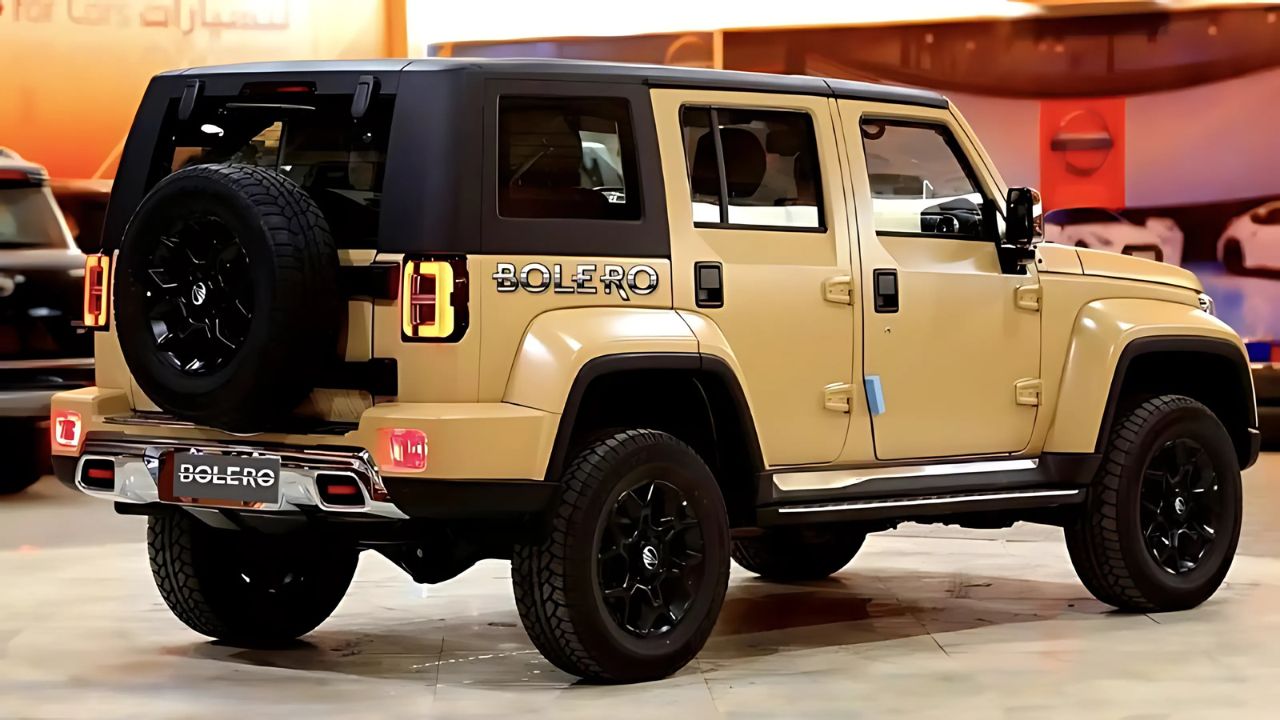Mahindra Bolero: In the diverse landscape of India’s automotive market, few vehicles have left as lasting an impression as the Mahindra Bolero. For over two decades, this robust utility vehicle has been a familiar sight on both urban streets and rural terrains, embodying the spirit of durability and versatility that Indian consumers have come to expect from the Mahindra brand.
A Legacy of Reliability
First introduced in 2000, the Mahindra Bolero quickly established itself as a go-to vehicle for those seeking a dependable, no-frills transportation solution. Its boxy design, high ground clearance, and powerful engine made it an instant hit among rural customers, government agencies, and fleet operators alike. The Bolero’s ability to navigate challenging road conditions while carrying substantial loads cemented its reputation as a true workhorse.
Evolution Through the Years
While maintaining its core identity, the Bolero has undergone several updates to keep pace with changing market demands and regulatory requirements. Mahindra has consistently refined the vehicle’s design, improved its comfort features, and enhanced its performance without compromising on its fundamental ruggedness.
Key Milestones:
- 2000: Initial launch of the Mahindra Bolero
- 2007: Introduction of the more powerful DI engine
- 2011: Launch of the Bolero Camper, expanding its utility in the pickup segment
- 2016: Introduction of the Bolero Power+ with a more efficient mHawk D70 engine
- 2020: Launch of the BS6 compliant models, adhering to stricter emission norms
The Bolero’s Market Position
In an era where SUVs and crossovers dominate the automotive landscape, the Bolero has managed to carve out a unique niche for itself. It continues to appeal to a diverse customer base, from rural entrepreneurs to urban fleet operators, thanks to its blend of practicality, affordability, and low maintenance costs.
The vehicle’s success is reflected in its sales figures, consistently featuring among the top-selling utility vehicles in India. This enduring popularity is a testament to Mahindra’s understanding of the Indian market and the Bolero’s alignment with consumer needs.
Technical Prowess and Practical Design
At the heart of the Bolero’s appeal is its robust mechanical setup. The latest models feature a BS6-compliant engine that balances power with fuel efficiency. The high ground clearance and sturdy suspension system enable the Bolero to tackle a variety of terrains with ease, making it a favorite in areas with underdeveloped road infrastructure.
The interior of the Bolero prioritizes functionality over luxury, offering ample space for passengers and cargo. Recent updates have introduced modern amenities such as a digital instrument cluster, Bluetooth connectivity, and air conditioning, enhancing the overall driving experience without deviating from its utilitarian roots.
Specifications Table
| Feature | Specification |
|---|---|
| Engine | 1.5L mHawk75 Diesel Engine |
| Power | 75 bhp @ 3600 rpm |
| Torque | 210 Nm @ 1600-2200 rpm |
| Transmission | 5-Speed Manual |
| Fuel Efficiency | 16.7 km/l (claimed) |
| Seating Capacity | 7 or 9 (depending on variant) |
| Ground Clearance | 180 mm |
| Fuel Tank Capacity | 60 liters |
| Length | 3995 mm |
| Width | 1745 mm |
| Height | 1880 mm |
| Wheelbase | 2680 mm |
| Kerb Weight | 1615-1660 kg (depending on variant) |
| Suspension (Front) | Independent Front Suspension with Torsion Bar |
| Suspension (Rear) | Leaf Spring with Shock Absorbers |
| Brakes (Front/Rear) | Disc / Drum |
Challenges and Competition
Despite its strong market presence, the Bolero faces challenges in an increasingly competitive automotive landscape. The rise of feature-rich compact SUVs and the growing preference for more refined vehicles in urban areas have put pressure on Mahindra to continually update the Bolero.
Competitors like the Maruti Suzuki Ertiga in the MPV segment and various compact SUVs have emerged as alternatives for urban buyers looking for more modern designs and features. However, in its core markets, particularly rural and semi-urban areas, the Bolero continues to hold its ground.
Future Prospects
As India moves towards stricter emission norms and increased focus on vehicle safety, the future of the Bolero will depend on Mahindra’s ability to adapt the vehicle to these changing requirements while maintaining its core attributes. There are speculations about potential electrification or hybrid variants in the future, aligning with global automotive trends.
Conclusion
The Mahindra Bolero stands as a symbol of Indian automotive ingenuity – a vehicle that has successfully bridged the gap between rural utility and urban practicality. Its continued presence on Indian roads is a testament to Mahindra’s understanding of the market and the Bolero’s ability to evolve while staying true to its roots.
As it moves forward, the Bolero is likely to continue its journey as a reliable companion for many Indians, adapting to new technologies and market demands while retaining the rugged charm that has made it an icon of Indian roads. Whether navigating bustling city streets or traversing rough rural terrains, the Mahindra Bolero remains a steadfast choice for those seeking a dependable, versatile, and quintessentially Indian vehicle.
